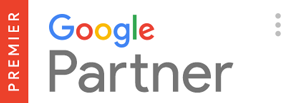Digital marketers have been known to shy away from B2B brands for a number of reasons. The increased research time required to gain knowledge of a niche and complex market, the low volume and conversion rates of keywords among a myriad of other contributors. While these factors are inescapable, keeping a few tips from below top of mind can transform both your attitude towards B2B accounts and the client’s digital presence.
The critical differences between B2B and B2C SEO strategies comes down to audience and keywords. Here are the high-level takeaways from our B2B SEO Strategy:
- Divide your audience into two two groups or personas: buyers & practitioners.
- Make the audience count, don’t count your audience in keyword selection. Locate a single term that can serve as the seed keyword in your topic cluster.
Audience
Typical consumer facing brands enjoy a linear, single minded sales process; B2B brands are confronted with a multi-headed, complex web. B2B products or services often require much larger investments of capital, pressuring their audience into heavy research to avoid a financial blunder. The potential investment creates ripples affecting many individual employees, entire teams and even the C-Suite, who are ultimately responsible for the decision. The end result is a bigger and more diverse audience than what is typically seen in B2C.
To address the swelled target base and shriveled volume divide your volume into two groups: buyers & practitioners.
Buyers
The decision makers in managerial or leadership positions. These individuals will not be using the product or service daily but are responsible for selecting the B2B company that best fits their own organizational needs. These are the signatures on the contract.
Buyers are concerned with scalability, cost, integration, support resources, compliance and long-term impacts. The goal of your B2B SEO strategy should be to greet the buyer at every intersection of their tedious research process. Low funnel pieces such as: “State Compliance Laws for X” serve as avenues of brand exposure early on in this key decision makers buying process.
Practitioners
The people who will be using the B2B product or service daily. In general these are employees at a lower level than the buyers, and while they may not be signing contracts they can spark conversations.
Practitioners take a more self-centered approach in their research process; exploring what tasks this addition will eliminate from their daily routine, pain points and best practices for maximizing its impact. Again, we want to greet them at every turn of their research, highlighting the benefits of the service or product on their day to day lives. Create content around best practices, tips, advantages of X, training and other avenues into their 40 hour week.
Keyword Research
As digital marketers we are all well aware of the massive volume of time we can spend on keyword research, even with simple B2C brands. Unfortunately we need to match the increased time spent researching by our audience in our keyword research. But fear not, as a different approach to typical keyword research will keep you engaged with what’s on your screen and not the podcast in your ear.
B2B keywords have lower volume and conversion rates due to the niche nature of the industry impacting fewer humans. This low volume should be seen as a positive, an invitation to think outside the box and flex your creativity. The primary goal of B2B keyword research is to identify terms in which our targeted audience likely makes up a large percentage of the estimated volume. Once these kernel keywords are selected scour your mind and the web for transactional and educational terms for both your buyer and practitioner personas.
Topic Clusters
The strategy of dividing a niche keyword into a web of supporting small volume pages above is known as “topic clustering”.
The general approach with topic clusters is creating a strong main topic page dedicated to the keyword the cluster is forming around; from here you want to surround this page with a moat of subtopic pages.
Subtopic pages should be adjacent in intent, to the main topic page, but answer a common question or explore a niche area more in depth. This encompassing content around a particular topic demonstrates authority to both Google and your audience. Adding in well mapped out internal links will further this demonstration to Google while also increasing engagement metrics and therefore aiding rank efforts. Below is an example of topic clustering using built around the term:

B2B SEO should be seen as a more creative and free form theater to conduct SEO as opposed to its current dull and constricting reputation. The increased complexity in your audience and decreased volume of keywords close the routine SEO doors but are an opportunity to explore new methods. Minor adjustments to the same approach you use with B2C clients can transform your impact on a B2B client. Next time the opportunity arises remember to:
- Divide your audience
- Buyer & Practitioner
- Educational & Transactional
- Buyer & Practitioner
- Find a seed keyword
- Quality over quantity in volume
- Topic Clusters
- Greet your audience along their entire journey








